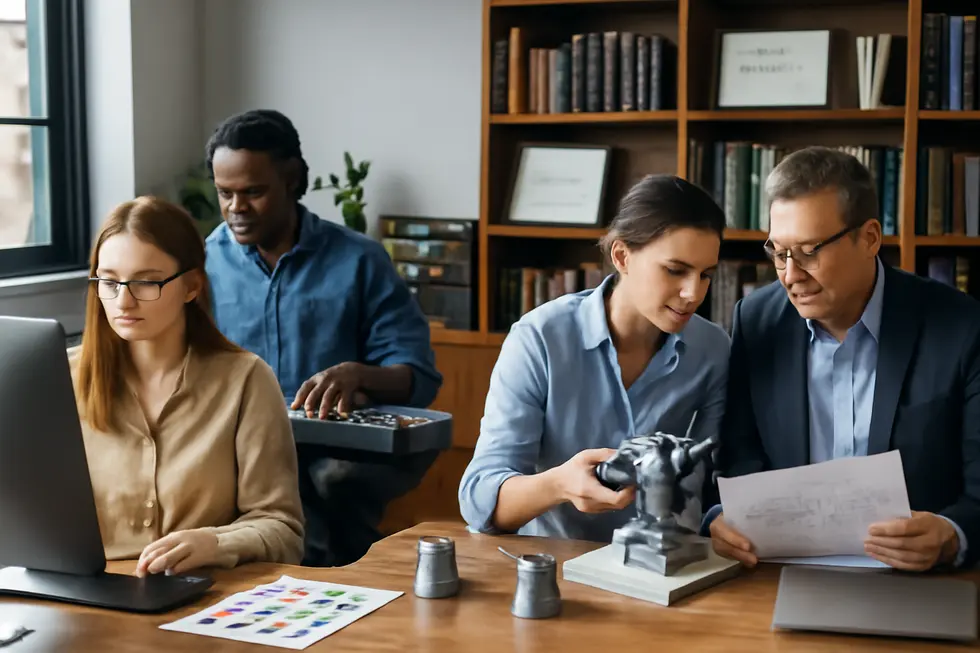Введение
For any business owner, understanding intellectual property rights is crucial to protecting innovations and creative assets. Copyright and patent are two primary legal tools designed to secure distinct types of intellectual property but often cause confusion due to their overlapping use in creative and innovative fields. This guide breaks down the core differences between copyright and patent protection, helping you appreciate when and how to use each. Beginning with clear definitions and fundamental distinctions, it moves into the duration and scope of protection both provide, compares their subject matter, and clarifies the rights and exclusivity granted to holders. Finally, practical applications with real-world examples demonstrate how leveraging these protections can benefit your business strategy. Together, these chapters create a comprehensive understanding of how copyright and patent work collectively to foster business growth and safeguard unique assets.
Оглавление
Chapter 1: Understanding Copyright v Patent: Definitions and Fundamental Differences
- How Technological Characteristics Shape Copyright and Patent Protections
- Economic Impact and Strategic Roles of Copyright and Patent Protections
- How Geopolitical and Societal Context Shape Copyright and Patent Protections
Chapter 2: Duration and Legal Protection in Copyright v Patent
- Contrasting Lifespans and Legal Protections: How Copyright and Patents Shape Intellectual Property Rights
- Navigating Technological Progress and Societal Interests Through Duration and Legal Safeguards
- How Geopolitical Factors Shape the Timeframes and Enforcement of Copyrights and Patents
Chapter 3: Scope and Subject Matter Comparison in Copyright v Patent
- Balancing Creativity and Utility: The Technological Boundaries of Expression and Innovation in Intellectual Property
- Economic and Policy Dimensions Shaped by Scope and Subject Matter in Copyright and Patent
- Global Dynamics Shaping the Scope and Subject Matter of Copyright and Patent Protections
Chapter 4: Rights and Exclusivity: Copyright v Patent
- How Technology Shapes Exclusive Rights: Navigating Copyright and Patent Protections
- Navigating Economic Value and Licensing Complexities between Copyright and Patent Protections
- Global Stakes and Social Dynamics of Copyright and Patent Protections
Chapter 5: Practical Applications and Examples in Copyright v Patent
- Balancing Protection in Software: Creative Expression Versus Functional Innovation
- Navigating Protection for Creative Expression and Technical Innovation
- Harnessing Copyright and Patent Synergies for Effective Business IP Strategies
Chapter 1: Understanding Copyright v Patent: Definitions and Fundamental Differences
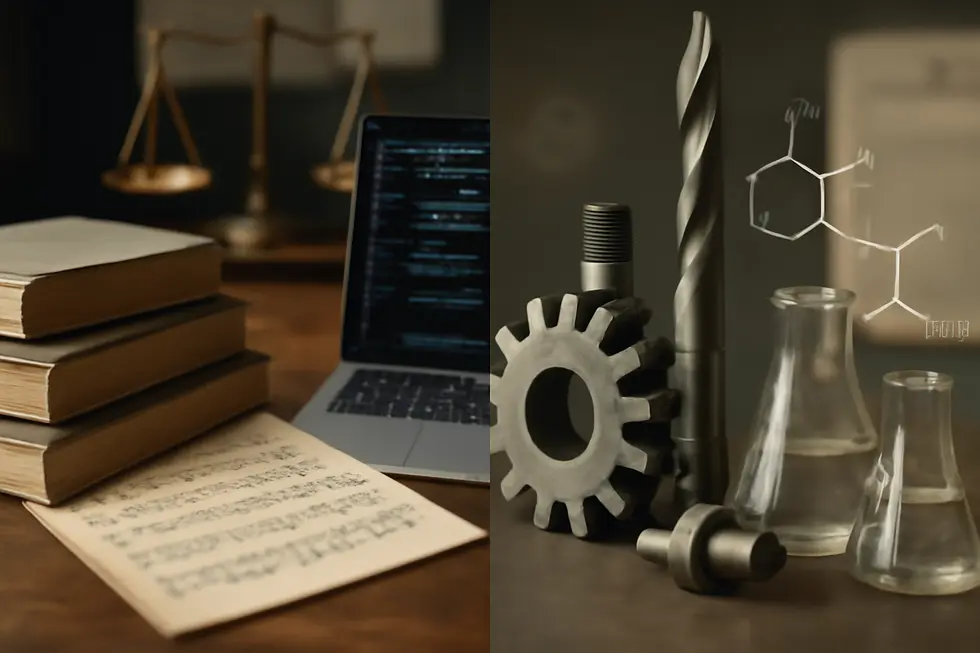
1. How Technological Characteristics Shape Copyright and Patent Protections
How Technological Characteristics Shape Copyright and Patent Protections
The distinction between copyright and patent protections fundamentally hinges on their technological characteristics and the nature of what each safeguards. Copyright focuses on protecting the творческое самовыражение fixed in a tangible medium — this includes literary works, music, films, artistic creations, and software code as a form of authorship. It shields the unique way ideas are expressed, rather than the ideas or functionalities themselves. For example, the specific lines of code in software are protected, but not the underlying algorithms or methods.
In contrast, patents are aimed squarely at protecting innovative technological solutions and inventions that are new, useful, and non-obvious. This may involve machines, manufacturing processes, chemical compositions, or technical methods, including software methods that embody a functional improvement or process. Patents grant exclusive rights for a limited period, typically 20 years from filing, during which others cannot legally make, use, or sell the patented invention without permission.
This divergence highlights a core technological difference: copyright guards the form of creative works regardless of the underlying technology, allowing protection to naturally extend into digital media without statutory amendments. Patents, however, require detailed technical disclosures, encompassing precise descriptions of structure and function to enable replication and legal enforcement. They also often interact with confidential business information and licensing strategies to maintain competitive advantages.
Emerging technologies like artificial intelligence complicate these boundaries, as current laws generally lack explicit rules on inventorship or authorship for AI-generated works or inventions under either protection. This reinforces the importance of understanding how each regime operates in the context of evolving technological landscapes.
For a deeper grasp of copyright’s role in protecting creative works and how it applies to digital content, see this resource on Защита авторских прав на книги, фильмы и песни.
An external authority on the distinctions and legal frameworks of patents and copyrights can be found at the World Intellectual Property Organization (WIPO): https://www.wipo.int/about-ip/en/
2. Economic Impact and Strategic Roles of Copyright and Patent Protections
Copyright and patent protections serve as essential pillars in the economic landscape, yet they fulfill distinct roles aligned with their legal scope. Copyright safeguards the original expression of creative works—like literature, music, art, and software code—offering creators exclusive rights to reproduce, distribute, and display their work for an extended period, typically the author’s lifetime plus decades. This protection stimulates cultural growth and creative dissemination by enabling creators to monetize their specific expressions without limiting access to the underlying ideas or functional concepts.
Patents, on the other hand, focus on novel, useful, and non-obvious inventions or processes. By granting inventors exclusive rights usually for 20 years, patents create a temporary monopoly that encourages investment in research and development. This exclusivity allows innovators to recoup substantial development costs and attract funding necessary for technological advancement. However, patents require significant time and financial resources to obtain and can restrict public access to the invention during the protection period, affecting market competition.
From an economic perspective, copyrights tend to be less costly and more accessible, fostering broad cultural and informational exchange by protecting how ideas are expressed. Patents demand more rigorous examination and investment, focusing on safeguarding functional and technical innovations that drive industry progress. For example, in software development, the copyright protects the actual code written, while the underlying algorithm or technical method may qualify for patent protection, potentially expanding commercial benefits but increasing complexity and expenses.
These fundamental differences highlight why businesses and creators must carefully navigate intellectual property strategies to maximize value, balancing the costs and durations of protection with their innovation goals. For a deeper understanding of intellectual property’s role in fostering innovation and competitiveness, see the detailed analysis in the SSRN 2024 paper.
Further insights on copyright’s business benefits can be explored in the article on Защита авторских прав на книги, фильмы и песни.
3. How Geopolitical and Societal Context Shape Copyright and Patent Protections
Copyright и патент protections are not merely legal constructs; they are deeply influenced by geopolitical and societal frameworks that shape their definitions, purposes, and implementation worldwide. At their core, copyright safeguards original creative expressions fixed in tangible media, covering literature, music, art, and software code as expression. In contrast, patents protect inventions—novel, useful, and non-obvious innovations in products, processes, or designs—focusing on their functional utility rather than artistic form.
These distinctions manifest differently across geopolitical landscapes. For instance, the United States champions a rights-based patent philosophy emphasizing individual property rights and innovation incentives, grounded in its constitutional mission to advance progress. Here, patent and copyright systems reward creators and inventors alike, balancing private exclusivity with public benefit. Conversely, in countries like China, patent law functions within a state-directed model, aligning intellectual property protection with broader national ambitions for economic growth and technological leadership. This contrast illustrates how varying governance priorities influence the scope and enforcement of intellectual property rights.
Societally, copyright embodies the value placed on cultural and creative expression, ensuring authors’ moral and economic rights to foster widespread knowledge dissemination. Patents reflect a societal commitment to technological advancement by incentivizing disclosure of inventive breakthroughs in exchange for time-limited exclusivity, thus promoting competition and innovation.
Understanding these nuanced geopolitical and societal perspectives reveals why copyright and patent law, though unified under intellectual property, operate with distinct objectives and terms. Their frameworks echo the balance each society strikes between protecting individual creativity and serving collective progress.
For a deeper exploration of how copyright protects creative works, see this comprehensive guide on Защита авторских прав на книги, фильмы и песни. Additional detailed definitions and differences can be found at PatentPC.
Chapter 2: Duration and Legal Protection in Copyright v Patent
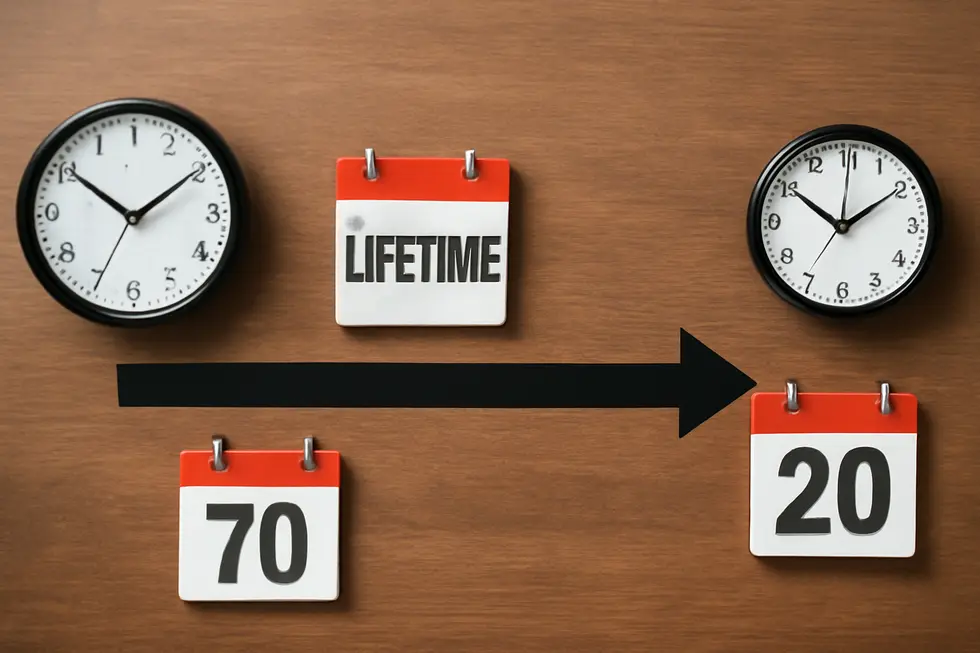
1. Contrasting Lifespans and Legal Protections: How Copyright and Patents Shape Intellectual Property Rights
Contrasting Lifespans and Legal Protections: How Copyright and Patents Shape Intellectual Property Rights
The duration and legal frameworks of copyright and patent protections underscore their distinct roles in intellectual property law. Patents typically grant inventors exclusive rights for a fixed period—generally 20 years for utility patents—starting from the filing date. This period can occasionally be extended, primarily in specialized sectors like pharmaceuticals, to compensate for regulatory delays. However, such extensions are exceptions rather than the norm, and renewal fees are required throughout the patent term to maintain validity. Design patents have a shorter life span, usually 14 years, while plant patents align with the standard 20-year timeframe.
In sharp contrast, copyright protects original works of authorship, such as literary texts, musical compositions, and artistic creations, for a considerably longer duration. Most jurisdictions adopt a term extending through the author’s life plus an additional 50 to 70 years after their death. This extended period aims to safeguard cultural and intellectual expressions well beyond the creator’s lifetime. Unlike patents, copyrights are automatic upon fixation of the work in a tangible form and do not require renewal fees.
Legally, patents confer the right to make, use, or sell an invention exclusively, focusing on functional innovation. Once expired, patented inventions enter the public domain, encouraging further innovation and competition. Copyrights, on the other hand, protect the form of creative expression but not the underlying ideas or functional aspects. After the copyright term ends, the creative work also transitions into the public domain, allowing free public use.
This dichotomy between copyrights’ extended protection of expression and patents’ time-limited monopoly on function reflects their complementary goals: nurturing cultural creativity while stimulating technological advancement. For businesses seeking to understand strategic intellectual property protections, recognizing these temporal and legal distinctions is crucial. More insights on protecting creative works can be explored in this detailed article on Защита авторских прав на книги, фильмы и песни.
For further official details on patent durations and terms, see the United States Patent and Trademark Office resources здесь.
2. Navigating Technological Progress and Societal Interests Through Duration and Legal Safeguards
The contrasting durations and legal protections of copyrights and patents reflect deeper technological, economic, and societal dynamics shaping innovation and culture. Patents typically grant inventors exclusive rights for 20 years from filing, though regulatory delays—especially in fields like pharmaceuticals—often shorten effective protection to around 14 years, with some jurisdictions allowing extensions to compensate. This limited exclusivity incentivizes costly research and development while requiring full public disclosure, thereby driving technological progress. Conversely, copyrights emerge automatically upon creation, protecting an author’s original expression for life plus 50 to 70 years, depending on jurisdiction. This extended term supports sustained cultural enrichment and estate planning for authors but can also delay works entering the public domain.
Economically, patents offer inventors temporary monopolies to recover significant investment, fostering competitive innovation cycles and sometimes strategic patenting practices. Copyrights provide creators long-term economic interests in their works, encouraging ongoing cultural production and distribution, ultimately enhancing society’s shared knowledge. Technologically, patents focus on protecting novel, utilitarian inventions, demanding rigorous examination to qualify, thus promoting the advancement of useful inventions. Copyrights, in contrast, safeguard the expressive form rather than technological function, underpinning creative fields like literature, music, and software code expression.
From a societal perspective, patents embody a trade-off between rewarding inventors and ensuring future public access through term limits and mechanisms such as compulsory licensing in emergencies. Copyright’s longer duration underscores societal values placed on authorial legacy but also stimulates debate about prolonged monopoly effects on cultural availability.
Together, these frameworks balance distinct policy goals: patents foster ongoing innovation through time-limited functional protection, while copyrights promote enduring cultural creativity via extended expressive rights. This differentiation shapes how knowledge and innovation flow to benefit both technological development and cultural heritage.
For more nuanced insights into how long drug patents last amid regulatory impacts, see the detailed discussion at Drug Patent Watch. Additionally, understanding copyright’s role in protecting creative works is crucial; resources like Copyright Protection for Books, Movies, Songs предлагают ценные рекомендации.
3. How Geopolitical Factors Shape the Timeframes and Enforcement of Copyrights and Patents
Geopolitical factors profoundly shape both the duration and enforcement of copyrights and patents, creating diverse legal landscapes worldwide. Different nations set unique terms of protection and implement specific legal frameworks that reflect their political, economic, and cultural priorities, despite ongoing efforts toward international harmonization under treaties like the Berne Convention for copyright and the Agreement on Trade-Related Aspects of Intellectual Property Rights (TRIPS) for patents.
In patent systems, variance is especially pronounced. Countries like the United States offer distinct types of patents including utility, design, and plant patents, typically granting 20 years of protection for utility inventions. Its legal approach involves rights-based enforcement through federal courts, supporting robust litigation. Conversely, China incorporates an additional category—utility model patents—which are not available in the U.S., enabling faster, though potentially less rigorous, protection that aligns with its rapid industrial growth strategy. China’s bifurcated enforcement system separates validity and infringement issues, often providing swift resolution favorable to innovation enforcement, which attracts foreign patent holders despite geopolitical tensions. Russia’s patent regime also follows a first-to-file principle with 20 years of protection but places emphasis on local ownership and employment-related patent rights, reflecting national economic models.
In copyright law, although life of the author plus 50 or 70 years is standard in many jurisdictions, enforcement and recognition vary due to differences in treaty adherence and national statutes. Territorial disputes and political dynamics can complicate cross-border copyright enforcement and dispute resolution, often challenging multinational entities to tailor their intellectual property strategies accordingly.
This geopolitical patchwork means that multinational companies must navigate a complex web of intellectual property rules, balancing local legal nuances and international standards. Understanding these distinctions is crucial, especially as global competition in technology and creative industries intensifies. For creative works, exploring the nuances of защита авторских прав can offer valuable insights into strategic management of rights across jurisdictions.
External resource: WIPO’s overview on Intellectual Property and Geopolitics.
Chapter 3: Scope and Subject Matter Comparison in Copyright v Patent
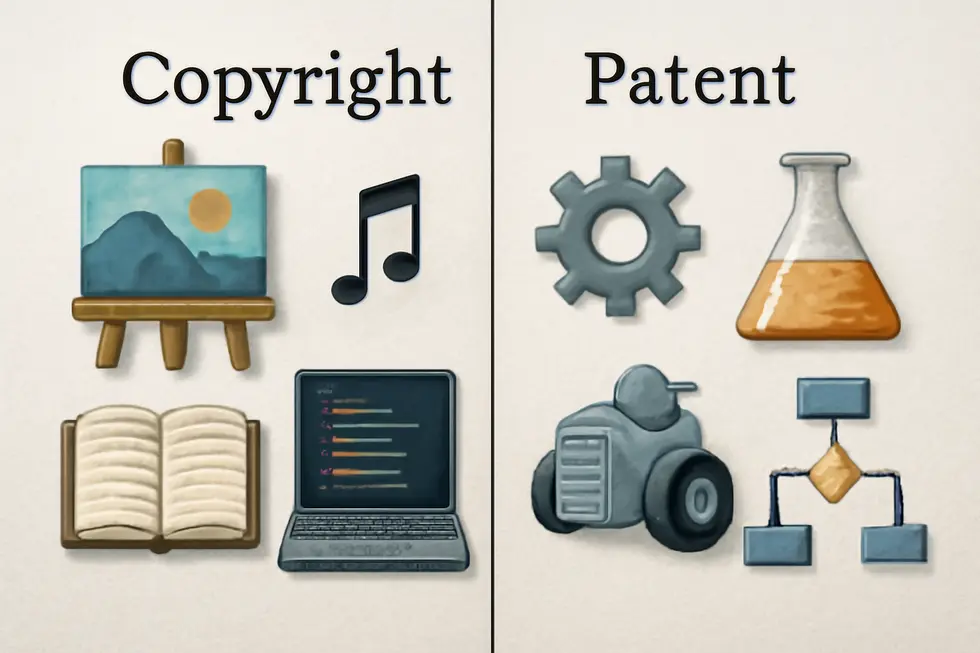
1. Balancing Creativity and Utility: The Technological Boundaries of Expression and Innovation in Intellectual Property
At the heart of intellectual property law lies a fundamental technological and conceptual distinction: copyright safeguards творческое самовыражение, while patent law protects functional innovation. This division shapes how each regime defines its scope and subject matter, reflecting their distinct policy goals. Copyright covers original artistic, literary, and creative works fixed in a tangible medium—such as novels, music, architectural designs, sculptures, movies, and software code as a literary work. It shields the unique manifestation of ideas, not the underlying ideas themselves, ensuring creators retain control over their specific expressions.
In contrast, patents focus on new, useful, and non-obvious inventions. These include machines, chemical compounds, industrial processes, and software methods when they meet patentability requirements. The scope here protects the practical function or technical innovation allowing exclusive rights to make, use, or sell the invention for a limited time. Importantly, patent law excludes protection of abstract ideas, natural phenomena, or mere concepts without practical application.
This technological boundary emphasizes how copyright and patent complement rather than conflict. Copyright nurtures culture by enabling creators to protect expressive works long after creation, typically for the life of the author plus seventy years. Patent law encourages technological advances by granting inventors exclusive use for about 20 years, incentivizing disclosure and further innovation.
Legal assessments reflect these differences: copyright infringement hinges on the substantial similarity of protected expression, excluding unprotectable ideas or methods; patent infringement involves unauthorized use or production of the claimed functional invention. Understanding these divides clarifies how technology and creativity are uniquely and effectively protected through distinct but balanced legal frameworks.
For further insights on copyright protection for creative works, see Защита авторских прав на книги, фильмы и песни.
2. Economic and Policy Dimensions Shaped by Scope and Subject Matter in Copyright and Patent
The distinct scope and subject matter of copyrights and patents naturally shape their economic and policy impacts, reflecting divergent approaches to fostering innovation and creativity. Patents center on protecting technical inventions—novel, useful, and non-obvious solutions—granting inventors exclusive rights typically lasting about 20 years. This exclusivity acts as an economic incentive by enabling inventors to recoup costly research and development investments. The trade-off involves restricting access to the invention temporarily, which can lead to higher prices but also encourages technological progress through the public disclosure of new inventions.
In contrast, copyright safeguards the specific expression of original creative works like books, music, and software code. Its protection spans the author’s lifetime plus several decades, providing creators control over reproduction and distribution without monopolizing the underlying ideas or methods. Economically, copyright fuels industries that rely on creative content by securing authors’ rights to monetize their expressions, while also balancing public access after copyright expiration. Since copyright does not block independent creation of similar ideas, it sustains a dynamic cultural environment.
Policy considerations consequently diverge. Patent systems emphasize rigorous examination to ensure only genuine inventions earn protection, balancing exclusivity with preventing patent thickets that may hinder innovation. The strong, adversarial enforcement mechanisms reflect patents’ role as property rights in high-investment technological sectors. Conversely, copyright policy focuses on safeguarding creators’ interests alongside maintaining public domain access for cultural development. Contemporary challenges include addressing digital piracy and adapting to new media, where the interplay of copyright and patent protections can be intricate, especially regarding software.
Overall, these economic and policy frameworks highlight how copyright and patent regimes serve complementary, yet fundamentally different, objectives aligned with the nature of what they protect. For a deeper exploration of copyright’s economic role in creative industries, see this преимущества авторского бизнеса. For further context on intellectual property economic implications, consult the comprehensive review in the accompanying research source.
3. Global Dynamics Shaping the Scope and Subject Matter of Copyright and Patent Protections
Copyright and patent protections reflect fundamentally different societal objectives and geopolitical influences, shaping their distinct scopes and subject matters. Copyright primarily safeguards original creative expressions—literature, music, art, and software code—aiming to nurture cultural enrichment and knowledge dissemination. It achieves this balance by granting creators exclusive rights for the life of the author plus 70 years before works transition into the public domain, thus fostering an open cultural commons. While these protections incentivize creativity, overly stringent copyright regimes risk commodifying culture and restricting access, underscoring the importance of maintaining a robust public domain.
In contrast, patents focus on the functional and technical domain, securing new, useful, and non-obvious inventions for approximately 20 years. They encourage technological innovation by granting inventors exclusive rights to manufacture, use, or sell their inventions, stimulating economic development and research investments. Yet, this exclusivity can create societal tensions, particularly in critical fields like medicine, where access to patented technologies impacts public health. To address such challenges, legal mechanisms such as compulsory licensing may be employed to balance patent rights with broader societal needs.
Geopolitically, patent systems reveal diverse national priorities. The U.S. embraces a property-rights model with strong judicial enforcement, emphasizing individual and corporate innovation within competitive markets. Conversely, China adopts a state-directed approach, expediting patent grants and focusing on domestic innovators to accelerate national technological advancement. These contrasting frameworks highlight how patent regimes align with economic strategies and legal cultures worldwide. Copyright, however, tends to adopt more uniform international norms, underscoring cultural and informational access over economic control.
Together, these distinctions illustrate how copyright and patent protections serve complementary roles: cultural creativity versus technological progress, shaped by varying geopolitical philosophies and societal imperatives. Understanding these global dynamics illuminates the broader impact of intellectual property frameworks on innovation, culture, and economic growth.
For a deeper exploration of how creative works are safeguarded, consider this detailed guide on Защита авторских прав на книги, фильмы и песни. For further insight into the geopolitical nuances of patent systems, see comparative studies on the U.S. and Chinese models.
Chapter 4: Rights and Exclusivity: Copyright v Patent

1. How Technology Shapes Exclusive Rights: Navigating Copyright and Patent Protections
How Technology Shapes Exclusive Rights: Navigating Copyright and Patent Protections
At the intersection of technology and intellectual property law, copyright and patent protections define distinct paths for securing exclusivity. Copyright exclusively safeguards the оригинальное выражение of ideas fixed in a tangible form. This includes literary works, software source code, artwork, and multimedia content. The focus lies firmly on the form of creative output rather than the underlying ideas or functionalities it conveys. By contrast, patent law targets the functional and technical aspects of innovations — new devices, manufacturing methods, chemical compositions, or software algorithms that demonstrate novelty, usefulness, and non-obviousness.
This technological distinction creates a clear boundary in protection. For example, written software code enjoys automatic copyright protection the moment it is fixed in a medium, shielding against unauthorized copying or distribution. However, the algorithm or practical methods implemented by that code may qualify for patent protection if they meet stringent criteria, thus granting the inventor exclusive rights for up to twenty years. This exclusivity empowers inventors to prevent others from manufacturing or exploiting the patented solution during its term.
The level of exclusivity conferred also differs significantly. Copyright allows creators to control reproduction and public use of their expressive works but does not bar independent creation of similar ideas. Patents, on the other hand, grant broader exclusivity, barring others from using, making, or selling the invention without consent. This distinction fuels innovation by balancing the creative mystery of expression with legally enforceable technical advances.
Ultimately, the technology underlying a work determines whether copyright or patent protection better fits. The legal structures complement one another: copyright nurtures sustained protection and dissemination of artistic and literary expression over the author’s lifetime plus decades, while patents incentivize technological progress by offering a limited monopoly on practical inventions. For businesses navigating these protections, understanding this framework is essential. More insights can be found in this comprehensive guide on copyright protection and external resources exploring the core differences between patents and copyrights.
2. Navigating Economic Value and Licensing Complexities between Copyright and Patent Protections
The economic and licensing landscapes of copyrights and patents reflect their distinct roles in intellectual property protection. Copyrights arise automatically upon creation, offering creators broad rights over their original expressions, such as literary works, music, or software code. This ease of acquisition and relatively low cost make copyrights economically accessible. Consumers pay primarily for access to the creative content itself. Since copyrights protect only the expression, not the underlying ideas or methods, licensing agreements focus on permissions to reproduce, distribute, or publicly display the work. These agreements tend to be less complex and involve comparatively lower fees.
In contrast, patents safeguard novel inventions and processes that fulfill stringent criteria, making their acquisition expensive and procedurally demanding. Legal fees, rigorous examination, and potential international filings can amount to tens of thousands of dollars. Patent exclusivity lasts up to 20 years from filing, granting owners the right to exclude others from manufacturing, using, or selling the invention. This exclusivity enables inventors to command significant economic value through licensing, often involving detailed agreements with clearly defined scopes, territories, durations, and financial terms such as royalties or upfront payments. Exclusive licensing can even restrict the patent holder’s own ability to use the invention within designated regions, reflecting the high strategic stakes involved.
However, the economic advantages of patents are tempered by costly enforcement and litigation. The rise of patent trolling and overlapping patent portfolios, especially in sectors like pharmaceuticals and technology, lead to substantial expenses—estimated in the United States alone at around $500 billion annually—affecting innovation and market access. For instance, patent thickets can delay entry of generic drugs, increasing treatment costs.
Software exemplifies this duality: the source code’s expression is copyright-protected, while novel algorithms or functionalities may be patented. Thus, an integrated intellectual property strategy is essential to maximize value and ensure effective licensing.
For a deeper overview of the economic implications and licensing structures across intellectual property, see licensing structures and strategic negotiations for patents. [2]
3. Global Stakes and Social Dynamics of Copyright and Patent Protections
Copyright and patent systems play pivotal roles in shaping global innovation and culture, but their geopolitical and societal impacts diverge significantly. Copyright provides creators exclusive control over original works, typically lasting for the author’s lifetime plus 70 years. This limited monopoly eventually yields to the public domain, fostering widespread cultural enrichment and knowledge sharing. While international treaties strive to harmonize copyright protections, uneven enforcement often fuels tensions regarding equitable access to creative content, particularly between developed and developing countries. This tension reflects a broader challenge of balancing the interests of rights holders with global cultural dissemination.
In contrast, patent rights grant inventors exclusive commercial control over new inventions and technological processes for about 20 years. The patent landscape varies dramatically worldwide, influenced by national priorities—some emphasizing robust IP enforcement to stimulate innovation, others tailoring policies to promote public welfare and economic development. For example, the United States’ stringent patent environment encourages innovation but can lead to complex “patent thickets,” especially in pharmaceuticals, delaying generic drug entry and raising health costs worldwide. Meanwhile, countries like China adopt evolving patent frameworks that encourage rapid industrial growth through varied patent types, including utility models, which differ from Western standards.
These contrasting approaches to IP reflect deeper geopolitical struggles. Countries enforcing strong patent rights may face international criticism for restricting affordable medicine access, while emerging economies often seek a middle ground balancing innovation incentives against public health. On the societal front, copyright eventually unlocks broad cultural access but can initially restrict availability, whereas patents drive technological advancement while potentially fostering monopolies that impact affordability and accessibility.
The interaction of these systems continues to influence not only innovation and culture but also international relations and trade policies, highlighting the complex dance between motivating creators and inventors and meeting societal needs. For a deeper understanding of copyright’s economic role transitioning into public domain benefits, see the detailed analysis at copyright protection and business benefits. For further exploration of how patent thickets differ globally, refer to DrugPatentWatch’s insight on patent thickets.
Chapter 5: Practical Applications and Examples in Copyright v Patent
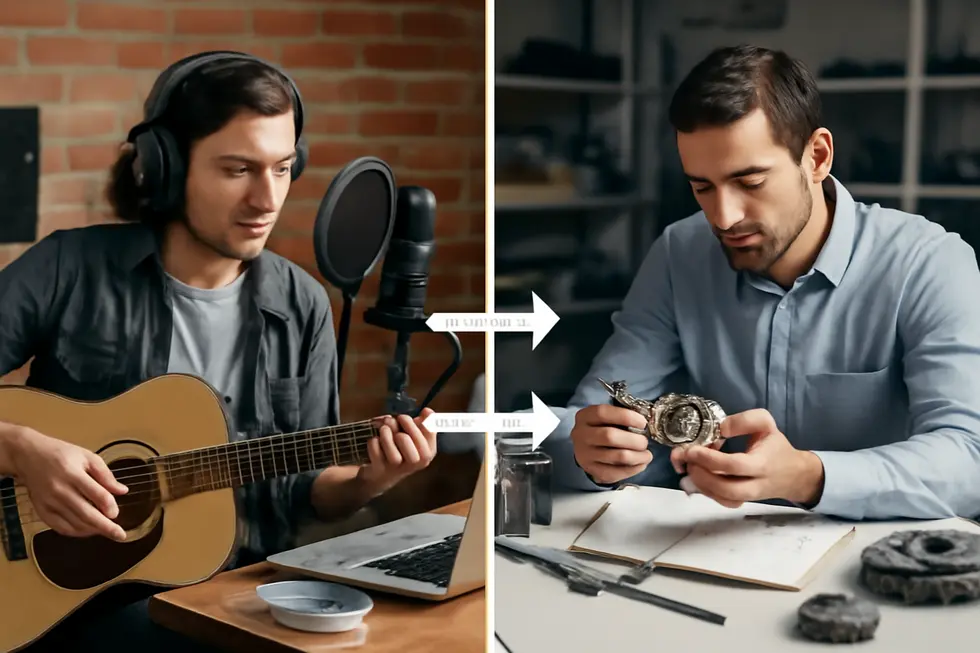
1. Balancing Protection in Software: Creative Expression Versus Functional Innovation
Balancing Protection in Software: Creative Expression Versus Functional Innovation
Software uniquely intersects copyright and patent law, illustrating how these protections serve complementary yet distinct roles. Copyright safeguards the original expression contained in software—specifically, the source code, user interface designs, graphics, and accompanying documentation. From the moment a developer fixes the code in a tangible form, it is automatically protected, preventing unauthorized reproduction or distribution without requiring formal registration, although registering can enhance enforcement. This means that the specific coding style and structure a developer uses enjoy legal protection, preserving the creative effort behind the software’s visible form.
Conversely, patents extend protection to the innovative functional and technical aspects underpinning a program. For example, a newly invented algorithm that significantly improves data security or processing efficiency may qualify for a patent if it meets strict criteria such as novelty and non-obviousness. A granted patent provides the inventor exclusive rights for 20 years, blocking others from using the protected method or process without permission. This dual framework acknowledges that while the expression of code reflects creativity, the underlying systems and methods can be powerful inventions deserving distinct safeguarding.
In practice, software creators commonly rely on copyright to thwart direct copying of their code, preserving their creative work. Simultaneously, they may pursue patents to protect inventive algorithms or unique technical solutions embedded within the software. This strategic use of both protections encourages ongoing innovation by rewarding both artistic creation and technological advancement.
Legal systems also balance these rights with public interest by imposing time limits—copyright protection extends for the author’s life plus 70 years, while patent rights last only 20 years—and allowing exceptions like fair use or compulsory licensing. Such measures ensure that, over time, innovations and creative expressions can enter the public domain, fostering broader access and future creativity.
For more on securing creative works such as books, songs, and software expression, see обзор защиты авторских прав.
[1] General legal principles of IP protections in software
2. Navigating Protection for Creative Expression and Technical Innovation
Copyright safeguards original creative works such as literary pieces, music, artwork, software code, and digital designs. This protection arises automatically upon fixation of the work in a tangible form, though registering the copyright can strengthen legal enforcement. It grants creators exclusive rights to reproduce, distribute, publicly display, and perform their expressive content. For example, a software developer’s unique source code or a company’s original marketing visuals are shielded from unauthorized copying or distribution under copyright law.
В отличие от, патенты secure novel, useful, and non-obvious inventions, encompassing machines, industrial processes, chemical formulas, and innovative software methods. Obtaining a patent requires a formal application demonstrating the invention’s novelty and utility. Once granted, the inventor holds exclusive rights to make, use, or sell the innovation for up to 20 years. For instance, an engineer’s invention of a water purification technology or an original algorithm that enhances cybersecurity can be patented, granting legal control over their commercial use.
This distinction highlights how copyright focuses on protecting the выражение of ideas—the specific way creative works are presented—while patents protect the functional и technical aspects of inventions. Software illustrates this duality well: the written code is copyrighted, but the underlying algorithm or method, if sufficiently inventive, may be patented. The application processes also differ significantly; copyright protection is mostly automatic, whereas patents involve rigorous examination and documentation.
These practical applications emphasize the complementary nature of copyright and patents in intellectual property law. They encourage both artistic creativity and technological innovation by providing tailored protections suitable for different types of intellectual assets. For more on securing creative works, explore insights about the преимущества регистрации авторских прав для бизнеса.
External insights into patent types and requirements can be found at the United States Patent and Trademark Office: https://www.uspto.gov/patents/basics.
3. Harnessing Copyright and Patent Synergies for Effective Business IP Strategies
Copyright and patents play complementary roles in safeguarding different facets of business innovation and creativity. Copyright primarily secures original creative expressions fixed in tangible forms such as software code, marketing visuals, manuals, or UI/UX designs. For instance, a technology startup relies on copyright to protect its app’s graphical interface and source code from unauthorized reproduction or redistribution, preserving its creative identity and competitive edge. In contrast, patents focus on protecting novel and non-obvious inventions, including technical processes and functional methods. A manufacturing firm might patent a unique industrial process, or a software company might seek patent protection for a groundbreaking algorithm that underpins their technology.
Strategically, businesses often layer intellectual property protections—leveraging copyrights for artistic content, patents for inventions, and trademarks for brand identifiers like logos and names—to build robust defenses against competitors. This integrated approach maximizes asset value and strengthens market positioning. Employing provisional patent applications offers a tactical advantage by securing early rights while allowing time to refine ideas and attract investments before committing to full patent filings. Parallelly, trade secrets protect confidential business information that either cannot or should not be patented, such as proprietary formulas or algorithms; however, maintaining their secrecy through solid confidentiality agreements is vital.
Active IP enforcement ensures these protections retain value over time, necessitating vigilant monitoring for infringements and readiness to take legal action. Businesses enhance their competitive moat and create monetization avenues through licensing by aligning protection methods to asset nature—creative works via copyright and functional innovations via patents. Implementing thorough IP audits, prioritizing registrations, and budgeting for enforcement transforms intellectual property into a strategic business tool that fosters growth and sustainability.
For businesses exploring tailored IP strategies, including when to opt for patents versus trade secrets, expert legal counsel can provide guidance through intricate registration and enforcement landscapes. This nuanced stewardship ensures intellectual property delivers maximum practical benefit.
For deeper insights on copyright protections relevant to business, see more at benefits of copyright registration in business.
Заключительные мысли
A clear understanding of copyright and patent protections equips business owners to safeguard their intellectual property effectively. While copyright secures the original creative expression such as written works, music, and software code, patents protect innovative, useful inventions and processes that add functional value. Recognizing their different durations, subject matter scopes, rights granted, and practical uses can shape a strategic approach to protecting your business assets. Successful businesses leverage both forms of protection to maintain a competitive edge, foster innovation, and ensure legal exclusivity in their respective markets. Ultimately, knowing when to rely on copyright versus patent empowers smarter decisions that drive growth and secure creative and technical achievements for years to come.
Получите свой товарный знак сегодня! Тысячи людей защитили свой бренд, подав заявку на товарный знак. А чего ждете вы? Начните подавать заявку на товарный знак!
О нас
The globe’s top website for registering trademarks and safeguarding your brand, name, logo, or slogan. We offer an easy, reliable platform designed to protect your intellectual property efficiently, helping you secure your unique business identity with confidence.

